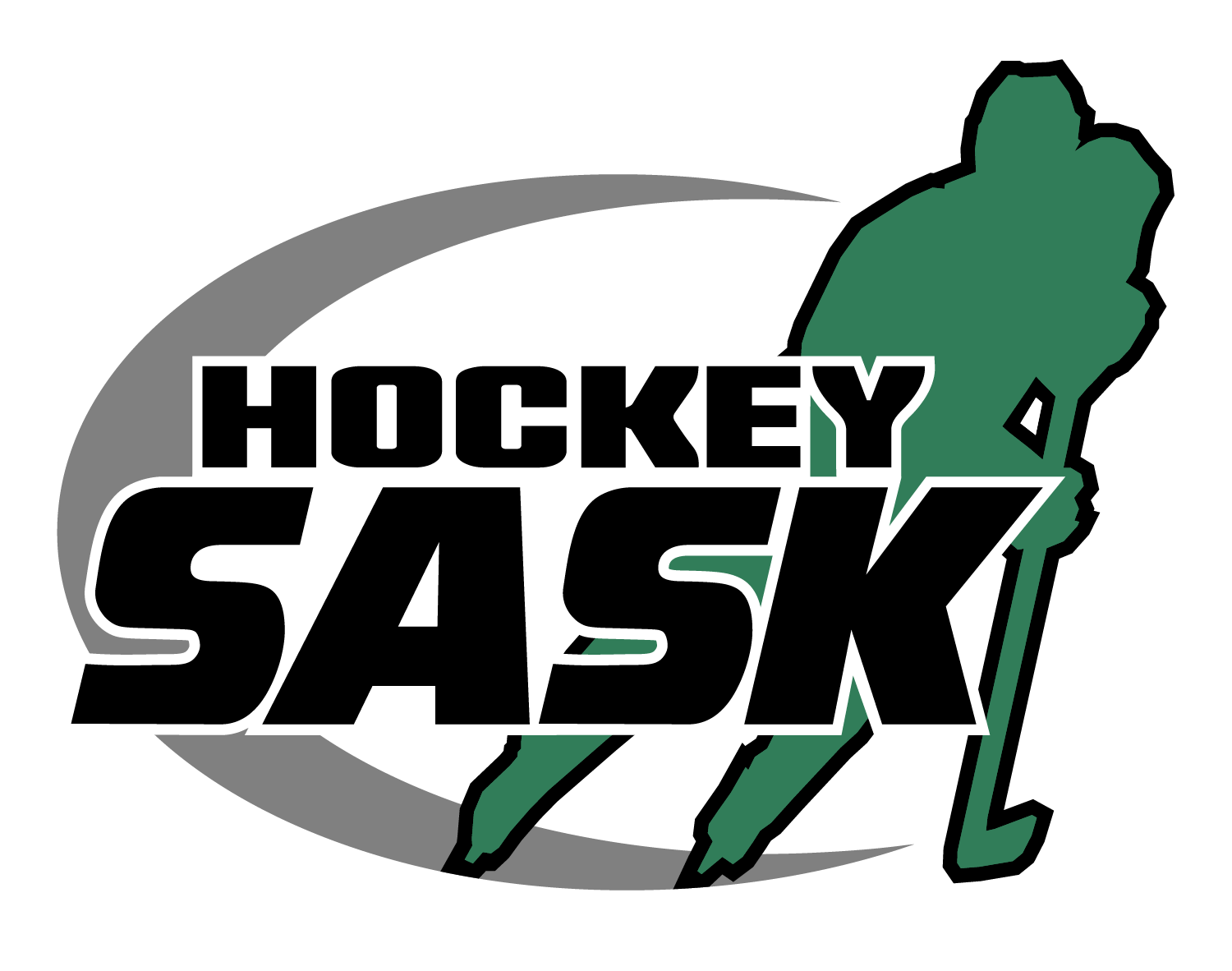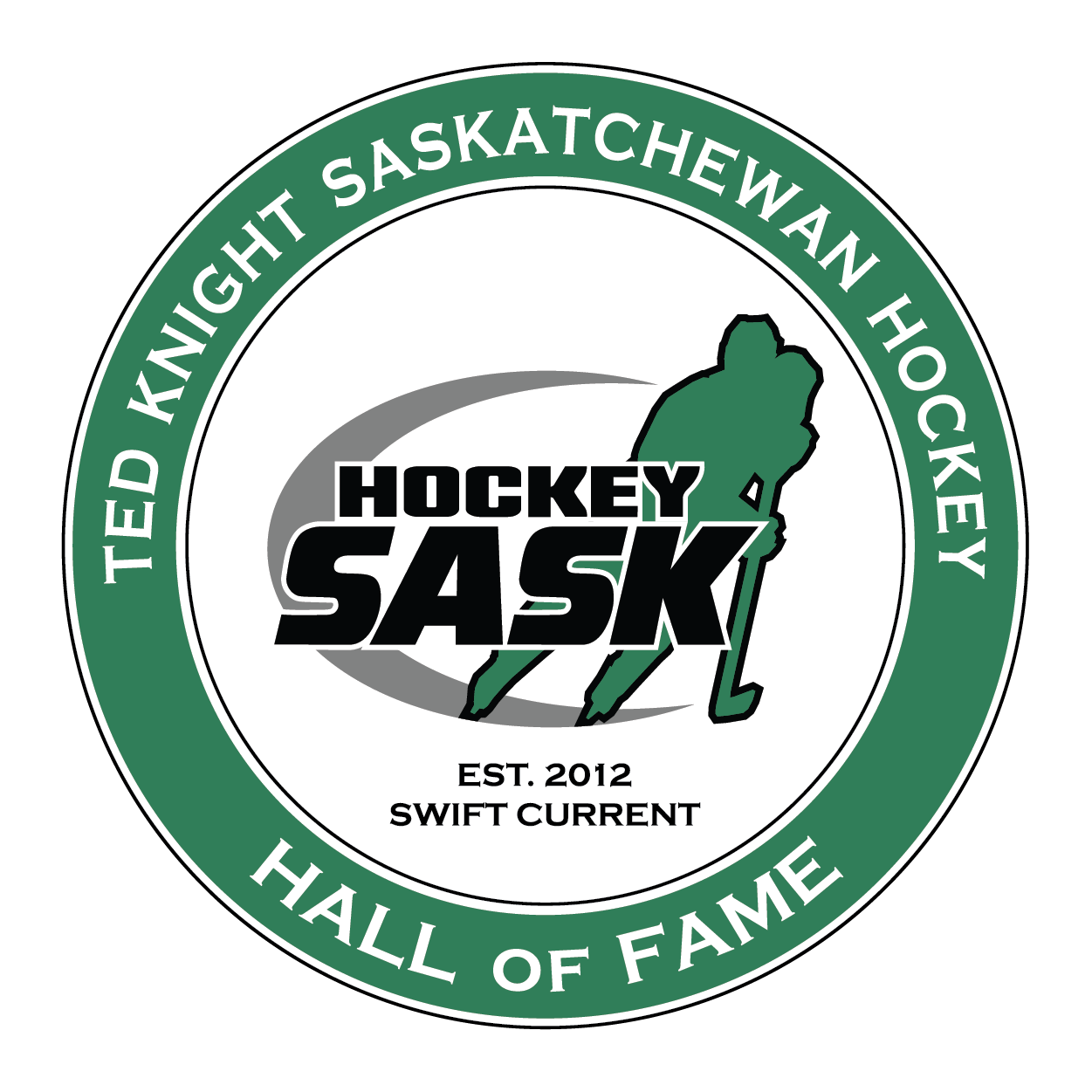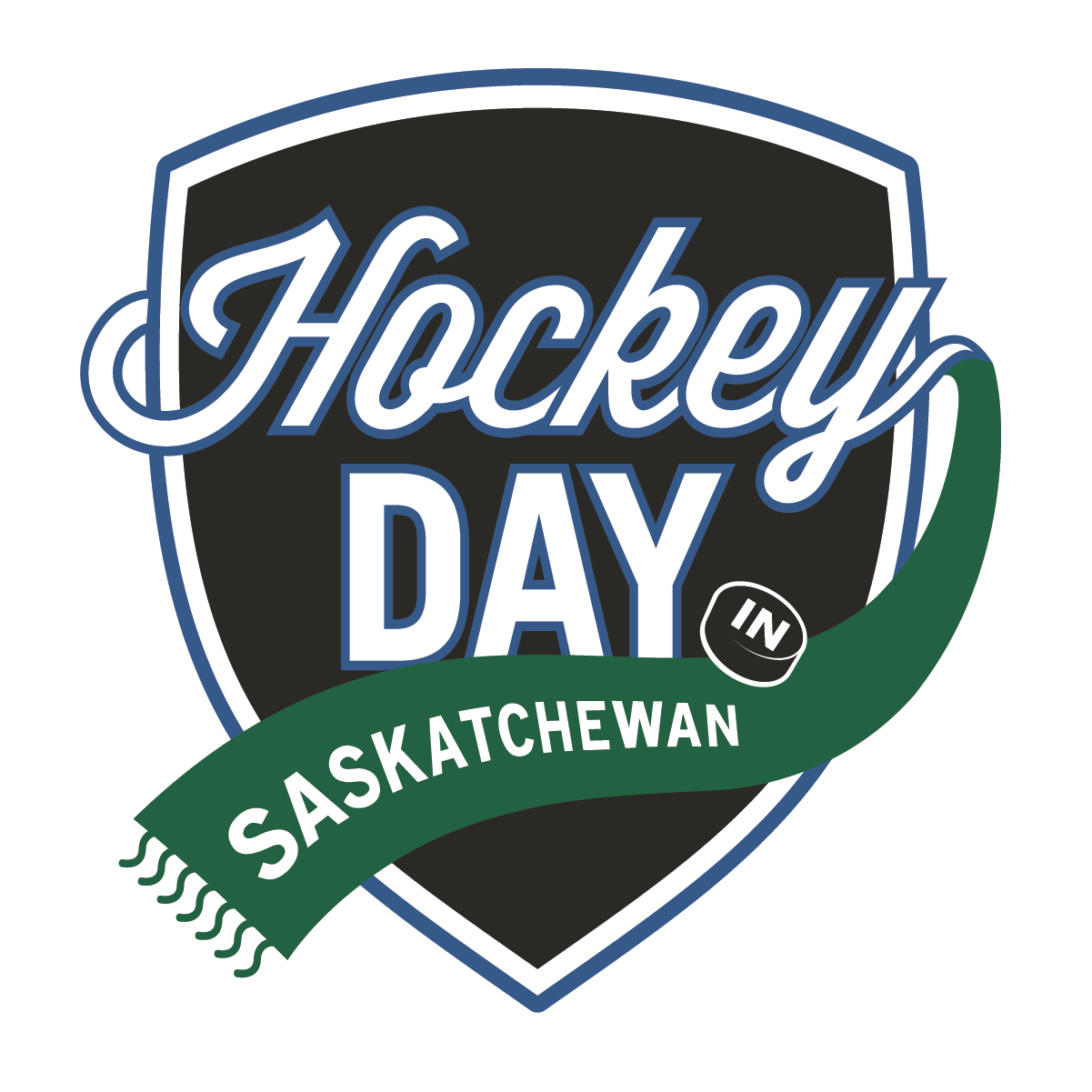Concussion Recognition & Return to Play
Hockey Saskatchewan, the sport governing body for ice hockey in Saskatchewan, Hockey Saskatchewan follows the guidelines proposed by the Concussion in Sport Group which publishes the Consensus statement on concussion in sport.
Hockey Saskatchewan is committed to maintaining the health, well-being and safety of all its participants. Safety is a top priority for those participating in the sport of hockey.
Hockey Saskatchewan recognizes the increased awareness of concussions. This policy is intended to be a tool to assist in the proper recognition, diagnosis, and management of athletes and members who may sustain a suspected concussion during a sport activity. It aims to ensure that athletes receive timely and appropriate care and proper management to allow them to return to hockey safely.
Hockey Saskatchewan encourages the prevention of concussions using sound education programs and enforcement of the rules of the game.
This includes, but is not limited to:
- The reduction of violence in the game.
- The reduction of head contact.
- The reduction of hitting from behind.
- Education of all participants on prevention and recognition of head injuries and responsible return to play.
- Expectation of respect and fair play.
Return to Play guidelines after sport-related concussions are designed for the safety of the players. It must be remembered that a sport-related concussion is a traumatic brain injury induced by biomechanics forces that results in a rapid onset of short-lived impairment in neurological function. These functional impairments resolve spontaneously, however, in some cases symptoms may be prolonged.
a) Scope
This policy applies to all players, coaches, officials, trainers, safety personnel, registered participants, parents/guardians, administrators, and decision makers of Hockey Saskatchewan.
b) Adherence
Hockey Saskatchewan expects all members to be dedicated to reducing concussions and their impact through a commitment to education and enforcement of the rules.
Hockey Saskatchewan expects all minor hockey associations to direct all team coaches, trainers, safety personnel, and staff to adhere to Hockey Saskatchewan’s Concussion Policy as a minimum standard in addressing concussion injuries.
Each minor hockey association determines appropriate discipline for any club, team or individual who knowingly disregards their responsibility of requiring a physician’s written permission permitting a player to return to play following a concussion.
c) Process
Pre-Season Education
Despite recent increased attention focusing on concussion, there is a continued need to improve concussion education and awareness. Optimizing the prevention and management of concussion depends highly on the annual education of all sport stakeholders (athletes, parents, coaches, officials, teachers, trainers, licensed healthcare professionals) on current evidence-informed approaches that can prevent concussion and more serious forms of head injury and help identify and manage an athlete with a suspected concussion.
Concussion education includes information on:
- the definition of concussion
- possible mechanisms of injury
- common signs and symptoms
- steps that can be taken to prevent concussions and other injuries from occurring in sport
- what to do when an athlete has suffered a suspected concussion or more serious head injury
- what measures should be taken to ensure proper medical assessment
- Return-to-School and Return-to-Sport Strategies, and
- Return to sport medical clearance requirements
Hockey Saskatchewan highly recommends that minor hockey associations include pre-season concussion education with stakeholders. This may include education during a pre-season team meeting, or the distribution of the Hockey Canada Concussion Card - Concussion Education and Awareness Program.
d) Head Injury Recognition
Recognition of the Signs and Symptoms of Concussion:
Although the formal diagnosis of concussion should be made following a medical assessment, athletes, parents, instructors/coaches, officials, and trained first aid personnel are responsible for the recognition and reporting of athletes who may demonstrate visual signs of a head injury or who report concussion-related symptoms. This is particularly important because many sport and recreation venues will not have access to on-site licensed healthcare professionals.
A Concussion Should be Suspected:
- in any athlete who sustains a significant impact to the head, face, neck, or body and demonstrates ANY of the visual signs of a suspected concussion or reports ANY symptoms of a suspected concussion as detailed in the Hockey Canada Concussion Card or the current Concussion Recognition Tool 5 (CRT5).
- if a player reports ANY concussion symptoms to one of their peers, parents, teachers, or coaches or if anyone witnesses an athlete exhibiting any of the visual signs of concussion.
In some cases, an athlete may demonstrate signs or symptoms of a more severe head or spine injury including convulsions, worsening headaches, vomiting or neck pain. If an athlete demonstrates any of the ‘Red Flags’ indicated by the Hockey Canada Concussion Card or Concussion Recognition Tool 5, a more severe head or spine injury should be suspected, and Emergency Medical Assessment should be pursued.
e) Concussion Management
If a player is suspected of having a concussion:
- They are immediately removed from further play, and not permitted to go back to play that day, regardless of whether the concussion occurs on or off the ice
- If there are doubts, assume that a concussion has occurred
- The player is referred to a physician for diagnosis as soon as possible.This Medical Assessment Letter can be used to document the concussion diagnosis, be shared with the coach, and uploaded to the player’s Hockey Canada Registry.
- Once a player who is experiencing “concussion like symptoms” is diagnosed with a concussion by a physician, they are not permitted to return to play or practice/training until all of the return to play requirements at met (see Hockey Canada Concussion Card, or Parachute Smart Hockey Return-To-Sport Strategy)
- Written clearance from a physician is required as outlined in the return to play strategy prior to returning to activity. This Medical Clearance Letter can be used for this purpose. Copy of this documentation required by the coach, and is uploaded to the player’s Hockey Canada Registry (see Hockey Canada Concussion Follow-up and Communication Form)
The player is observed for symptoms and signs of a concussion using Hockey Canada Concussion Card or Concussion Recognition Tool 5. If a licensed healthcare professional is available they can assist with this observation and evaluation. If the person on site is not a physician, the player is directed to a physician for diagnosis and follow up as soon as possible.
If the player experiences loss of consciousness, assume a neck injury – call Emergency Services. If there is a significant loss of awareness and/or orientation, direct the player to an emergency room at the nearest hospital. If unsure, err on the side of caution and call Emergency Services. It is important to become familiar with the red flags section of Hockey Canada Concussion Card or Concussion Recognition Tool 5.
Remember, even though symptoms may not be present or they come and go, the player must be removed from play the day of the injury, must not return that day and sees a physician as soon as possible.
Athletes diagnosed with a concussion should be provided with education about the signs and symptoms of concussion, strategies about how to manage their symptoms, the risks of returning to sport without medical clearance and recommendations regarding a gradual return to school and sport activities. Athletes diagnosed with a concussion are to be managed according to the Return-to-School and Return-to-Sport strategy under the supervision of a medical doctor. When available, athletes should be encouraged to work with an athletic therapist or physiotherapist to optimize progression through their Return-to-Sport Strategy. Once the athlete has completed their Return-to-School and Return-to-Sport Strategy and is deemed to be clinically recovered from their concussion, the medical doctor can consider the athlete for a return to full sports activities and issue a Medical Clearance Letter.
The stepwise progressions for Return-to-School and Return-to-Sport strategies are outlined below. As indicated in stage 1 of the Return-to-Sport strategy, reintroduction of daily, school, and work activities using the Return-to-School strategy must precede a return to sport participation.
All concussions and suspected concussions must be referred to a physician as soon as possible. Coaches, Safety Personnel, and parents/guardians are not to pressure the player to return to play until the player has completed the six‐step return to play strategy and is medically cleared by a physician.
f) Medical Clearance - Return to Play Strategy
Athletes must have successfully completed their Return to School and Return to Sport to be considered for return to full sport activities.
The following is an outline of the Return- to-School strategy. Depending on the severity and type of symptoms present the student- athlete will progress through the following stages at different rates. If the student-athlete experiences new symptoms or worsening symptoms at any stage, they should go back to the previous stage.
|
Stage |
Aim |
Activity |
Goal of each step |
|
1 |
Daily activities at home that do not give the student-athlete symptoms |
Typical activities during the day as long as they do not increase symptoms (i.e., reading, texting, screen time). Start at 5-15 minutes at a time and gradually build up. |
Gradual return to typical activities |
|
2 |
School activities |
Homework, reading or other cognitive activities outside of the classroom. |
Increase tolerance to cognitive work |
|
3 |
Return to school part-time |
Gradual introduction of schoolwork. May need to start with a partial school day or with increased breaks during the day. |
Increase academic activities |
|
4 |
Return to school full-time |
Gradually progress |
Return to full academic activities and catch up on missed schoolwork |
The following is an outline of the Hockey Canada Concussion Card or Parachute Smart Hockey Return-To-Sport Strategy. An initial period of 24-28 hours of rest is recommended before starting the Return-to-Sport strategy. If the athlete experiences new symptoms or worsening symptoms at any stage, they should go back to the previous stage. It is important that youth and adult student-athletes return to full-time school activities before progressing to stage 5 and 6 of the strategy. It is also important that all athletes provide their coach with a Medical Clearance Letter prior to returning to full-contact sport activities.
|
Stage |
Aim |
Activity |
Goal of each step |
|
1 |
Symptom-limiting activity |
Daily activities that do not provoke symptoms
|
Gradual re-introduction of work/school activities |
|
2 |
Light aerobic activity
|
Light exercise, walking, stationary cycling slow to medium pace. No resistance training or other heavy lifting -Light intensity jogging or stationary cycling for 10-15 minutes at sub-symptom threshold intensity |
Increase heart rate |
|
3 |
Individual sport-specific exercise with no contact |
Activities such as running or skating. No body contact or other jarring motions, such as high-speed stops. - Moderate intensity jogging for 20-30 minutes at sub-symptom threshold intensity |
Add movement |
|
4 |
Begin training drills with no contact |
More challenging drills, such as shooting and passing drills. No impact activities. Give extra space around other players to avoid collisions or falls on the ice. May start progressive resistance training if appropriate. “No contact” pinny
|
Exercise, coordination, and increased thinking |
|
5 |
Full contact practice |
Following medical clearance. |
Restore confidence and assess functional skills by instructor/coach |
|
6 |
Return to sport |
Full game play |
|
Important:
Most people recover fully after a concussion injury if they allow that injury to heal completely before returning to strenuous activity. A second sustained concussion on top of a first sustained concussion, however, can lead to substantially more damage that one concussion alone.
Sufficient time between the concussion and return to play is critical. If there are previous concussions, it is important to report this to the physician. The more concussions an athlete sustains, the greater the odds of suffering another concussion. An athlete with a suspected concussion should not return to play until he or she has been medically evaluated by a physician.
Children are more sensitive to the effects of a concussion and will need to have a longer period of recovery time after a concussion injury before returning to sport. Use symptoms rather than a set time frame when assessing return to play. Always follow the advice of a physician.
References:
- Canadian Guideline on Concussion in Sport.Parachute 2017.
- Hockey Canada Concussion Policy. Revised June 1, 2019.
- McCory P, Meeuwisse W, Dvorak J et al.Consensus statement on concussion in sport- the 5th international conference on concussion in sport held in Berlin, Oct 2016. Br J Sports Med 2017.
Concussion Recognition and Return to Play Policy
RETURN TO HANDBOOK LISTING















